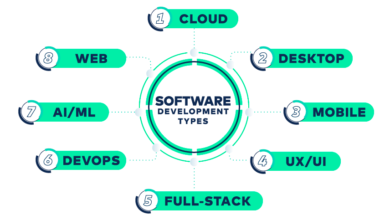Developing Software for Cash Management: Managing Cash Flows and Beyond

What is Cash Management Software Development?
Cash management software (CMS) development involves creating specialized systems that help businesses track, analyze, and optimize their cash inflows and outflows. These systems provide real-time visibility into financial data, enabling better control over liquidity, cash forecasts, and treasury functions. CMS solutions automate processes such as bank reconciliation, cash positioning, and payment management, ensuring seamless cash flow and reducing manual intervention. The development of such software typically involves integrating accounting, banking, and financial tools to offer a centralized platform for financial oversight.
Reasons to Develop a Cash Management System
-
Enhanced Financial Visibility
A cash management system provides a comprehensive view of a company’s financial position by consolidating all cash-related transactions in one platform. This real-time visibility into cash inflows, outflows, and balances across different bank accounts helps businesses stay updated on their liquidity. Financial leaders can make informed decisions based on current and projected cash positions, ensuring better transparency in handling finances.
-
Efficient Cash Management
By automating routine cash flow processes, CMS eliminates manual errors, speeds up reconciliation, and reduces the risk of discrepancies. It tracks all cash-related activities, from payments to receipts, ensuring efficient use of resources. Businesses can schedule payments, manage accounts receivable and payable, and keep track of multiple bank accounts from one platform. This improves cash cycle management and reduces idle or excess cash.
-
Good Governance
A well-developed CMS system promotes good financial governance by establishing better control mechanisms. It enforces policy compliance and strengthens audit trails for all cash-related transactions. Regular reporting features allow businesses to generate detailed reports that ensure transparency for stakeholders and regulatory bodies, fostering an environment of accountability.
-
Cash Gap Management
Cash flow gaps can create financial strain, affecting business continuity. A CMS can predict potential cash shortages or surpluses using data analytics, allowing businesses to take preemptive actions such as adjusting credit terms, delaying payments, or securing short-term financing. It also helps in aligning cash inflows and outflows with business needs, minimizing liquidity crises.
-
Integration and Scalability
Cash management systems can be seamlessly integrated with existing ERP systems, accounting software, and banking platforms, enabling a unified financial ecosystem. This integration simplifies data flow between systems, enhancing operational efficiency. Additionally, CMS platforms are scalable, accommodating growing transaction volumes, new bank accounts, and international operations as a company expands.
-
Advanced Cash Flow Analysis
CMS solutions offer sophisticated analytics and forecasting tools that enable businesses to predict future cash flow scenarios based on historical data. It can analyze different factors, such as seasonality, revenue trends, and payment cycles, to help businesses strategize. The software generates real-time cash flow forecasts, helping financial managers make informed decisions, adjust business strategies, and allocate resources more effectively.
-
Reduced Overhead Costs
Automating cash management reduces the manual workload, which translates to lower administrative and operational costs. Businesses can cut down on labor costs associated with manual reconciliation, payment processing, and cash forecasting. Additionally, it can help in identifying inefficiencies, such as excess liquidity or unneeded credit lines, which helps reduce borrowing costs.
-
Effective Financial Decisions
A CMS provides financial managers with the tools and data needed to make critical financial decisions, such as optimizing working capital, investing surplus cash, or managing debt. By leveraging accurate cash flow data and predictive analytics, businesses can better allocate funds, improve liquidity, and ensure financial stability. Access to real-time financial data empowers leaders to respond quickly to market changes, keeping the company agile and competitive.
This detailed content will provide a clear, informative guide on the benefits and features of cash management Software Development. It outlines the practical advantages for companies looking to optimize their financial operations. Let me know if you’d like any additional details or adjustments!
Here’s a detailed guide on the Key Steps to Develop Cash Flow Management Software and Tips for Building the Right Cash Management Software:
Key Steps to Develop Cash Flow Management Software
-
Develop Robust Backend Systems
The backend serves as the foundation for your cash flow management software. It should be designed with scalability, performance, and reliability in mind. The backend must be capable of handling multiple transactions, processing large volumes of financial data, and supporting multiple user roles and permissions. A well-structured backend should also include a secure database architecture to store financial data and ensure seamless communication with the frontend.
-
Utilize Integration APIs for Seamless Connectivity
Integration with banking platforms, accounting software (e.g., QuickBooks, Xero), ERP systems, and other third-party financial tools is essential for creating an efficient cash management system. APIs (Application Programming Interfaces) enable real-time data exchange, making it easier to synchronize cash inflows, payments, and reconciliations. Well-documented APIs allow your software to be easily integrated into the existing financial ecosystem of businesses.
-
Implement AI/ML Algorithms for Advanced Insights
Leverage artificial intelligence (AI) and machine learning (ML) to provide deeper insights and predictive analytics for cash flow forecasting. AI-powered algorithms can analyze historical data, identify patterns, and predict cash flow trends. ML models can continuously improve predictions over time, allowing businesses to anticipate financial gaps, manage liquidity, and optimize working capital.
-
Incorporate Comprehensive Reporting and Analytics
Reporting and analytics are vital components of any cash flow management software. Provide users with detailed, customizable reports that highlight key metrics like cash positions, cash forecasts, inflows/outflows, and liquidity ratios. The software should feature easy-to-understand dashboards, real-time updates, and visual representations (charts, graphs) to make financial data more accessible and actionable for users.
-
Ensure Stringent Security Measures
Given the sensitive nature of financial data, it’s crucial to implement robust security measures. End-to-end encryption, two-factor authentication (2FA), and role-based access control (RBAC) should be mandatory. Secure APIs, firewalls, and adherence to industry standards like PCI DSS (Payment Card Industry Data Security Standard) are essential to safeguarding the system from data breaches, fraud, and cyberattacks.
-
Conduct Rigorous Testing and Debugging
Before deployment, thoroughly test the software in various environments to identify and fix bugs. This includes functional testing to ensure the software behaves as expected, load testing to measure performance under heavy usage, and security testing to check for vulnerabilities. Continuous debugging and code optimization will ensure the software runs smoothly across different platforms and devices.
-
Monitor and Maintain Software Continuously
Once the software is live, it requires continuous monitoring and maintenance to ensure optimal performance. Regular updates to fix bugs, patch security vulnerabilities, and introduce new features should be part of the development cycle. Monitoring system health, cash flow trends, and user interactions will help identify areas for improvement and provide users with an uninterrupted experience.
Tips for Building the Right Cash Management Software
-
Customization Options
Every business has unique financial processes, so providing customization options is essential. Allow users to configure dashboards, reports, and cash flow forecasts according to their specific needs. Customizable workflows, templates, and alerts will make the software more adaptable to various industries and business sizes.
-
Visual Aspect and User Interface
The user interface (UI) should be intuitive, clean, and user-friendly. A visually appealing dashboard with easy-to-navigate menus and drag-and-drop functionality makes financial data easier to interpret. Incorporate responsive design to ensure the software works smoothly on all devices—whether desktop, tablet, or mobile.
-
Multi-User Capability
Cash management often involves collaboration across departments. Implement multi-user functionality that allows different team members to access the system with varying permission levels. Role-based access ensures that sensitive financial information is only visible to authorized personnel, while collaborative tools enhance teamwork and streamline communication.
-
Scalability and Manageable Entities
Your software should be able to grow alongside the business. Build a scalable system that can handle increasing volumes of transactions, data, and users without compromising performance. Additionally, include the ability to manage multiple entities (subsidiaries, branches, regions) under a single platform, allowing businesses with complex structures to track cash flow across all levels.
-
Data Security Features
Data security should be one of the core pillars of the software. In addition to encryption and 2FA, include audit logs that track every action taken within the system, helping businesses comply with regulatory requirements. Implement real-time monitoring for suspicious activity and offer automatic data backups to prevent data loss.
-
Integration with Partner Tools
Enable integration with key financial tools and systems, such as accounting software, ERP systems, and banking platforms. Seamless integration will streamline the process of managing cash flow, reconciling transactions, and generating reports. Consider offering API capabilities for businesses that need custom integrations with their proprietary systems.
-
Additional Features and Add-Ons
To differentiate your software, consider adding value-added features such as multi-currency support, automated payment processing, currency conversion, and a cash forecasting module. Other features like scheduled reports, custom alerts for cash deficits, and direct bank integrations can greatly enhance the functionality of the system and improve user experience.
By following these steps and tips, you can develop a robust and scalable cash flow management software solution tailored to meet the needs of businesses, ensuring they can efficiently manage liquidity, forecast cash flow, and make informed financial decisions.





